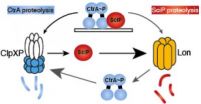The U.S. National Institute of Mental Health's Project Accept — a trial conducted by the HIV Prevention Trials Network to test a combination of social, behavioral and structural HIV-prevention interventions — demonstrated that a series of community efforts was able to boost the number of people tested for HIV and resulted in a 14 percent reduction in new HIV infections, compared with control communities.
"These study results clearly demonstrate that high rates of testing can be achieved by going into communities and that this strategy can result in increased HIV detection, which makes referral to care possible," said Project Accept's overall principal investigator, Thomas J. Coates, who directs UCLA's Center for World Health and is an associate director of the UCLA AIDS Institute. "This has major public health benefit implications by not only linking infected individuals to care but also by encouraging testing in entire communities and therefore also reducing further HIV transmission."
The trial was conducted in 34 communities in South Africa, Tanzania and Zimbabwe and in 14 communities in Thailand. It consisted of mobile HIV testing, post-test support services and real-time feedback.
The aim of the intervention was four-fold: (1) to increase access to voluntary counseling and testing, as well as post-test services; (2) to change community attitudes about HIV awareness and particularly about the benefit of knowing one's HIV status; (3) to remove barriers to knowing one's HIV status; and (4) to increase the safety of testing and minimize the potential negative consequences of testing by providing various forms of support.
Communities were matched into pairs based on sociodemographic, cultural and infrastructure characteristics, with one community randomly assigned to the intervention and one serving as a control for comparison. (The randomization was performed centrally, and the assignment was not blinded, due to the nature of the intervention.)
Among the findings:
Rates of testing were 45 percent higher in intervention communities than control communities, especially among men and young people.
Individuals in intervention communities, particularly those infected with HIV, reported a lower number of sexual partners and fewer multiple partners. This was particularly true among HIV-positive men, who reported 18 percent fewer sexual partners overall and 29 percent fewer concurrent sexual partners than those in control communities.
Diagnoses of HIV infection were higher in intervention communities.
Social acceptance of the importance of testing was higher in intervention communities.
Modest reductions in HIV incidence occurred in the intervention communities, compared with the control communities, particularly among women in the 25-to-32 age range.
Study participants who learned they were infected with HIV were directed to the study's post-test services, which included counseling and referrals to health and social services assistance. Those who tested negative were also directed to post-test services for further counseling, referrals and support to help ensure they remained uninfected. Local health authorities were thoroughly briefed on the study findings and encouraged to continue the implementation efforts.
Individuals need to be made aware of their HIV status through testing in order to receive the necessary care and treatment and learn how to prevent infection, said Dr. Wafaa El-Sadr, principal investigator of the HIV Prevention Trials Network, under whose auspices the trial was conducted.
"These study findings provide clear and compelling evidence that the provision of mobile services, combined with appropriate support activities, is a strategy that can increase testing rates and also reduce HIV incidence," she said.
INFORMATION:
The U.S. National Institute of Mental Health (grants 5U01MH066687, 5U01MH066688, 5U01MH066701 and 5U01MH066702); the U.S. National Institute of Allergy and Infectious Diseases; and the Office of AIDS Research, all components of the U.S. National Institutes of Health, funded this research.
The HIV Prevention Trials Network (HPTN) is a worldwide collaborative clinical trials network that develops and tests the safety and efficacy of interventions designed to prevent the acquisition and transmission of HIV. The HPTN research agenda is focused primarily reducing HIV transmission and acquisition through the use of antiretroviral therapy for HIV-infected persons and antiretrovirals as pre-exposure prophylaxis for HIV-negative persons; reducing the impact of behavioral and biologic co-factors that increase the risk of infection; treating substance abuse (particularly injection-drug use); reducing behavioral risk through interventions; and structural interventions. The highest priority of the HPTN is to develop and implement combination prevention strategies that demonstrate a significant and measurable reduction in HIV incidence in a variety of populations and epidemic settings.
The UCLA Center for World Health is a joint initiative of the David Geffen School of Medicine at UCLA and UCLA Health. The goal of CWH is to make UCLA a recognized global leader in health education, research and service, with a reputation for excellence in improving the health of the world's people. The center is led by Thomas J. Coates, a professor of medicine in the division of infectious diseases, and J. Thomas Rosenthal, a professor of urology and chief medical officer for UCLA Health.
The UCLA AIDS Institute, established in 1992, is a multidisciplinary think tank drawing on the skills of top-flight researchers in the worldwide fight against HIV and AIDS, the first cases of which were reported in 1981 by UCLA physicians. Institute members include researchers in virology and immunology, genetics, cancer, neurology, ophthalmology, epidemiology, social sciences, public health, nursing and disease prevention. Their findings have led to advances in treating HIV, as well as other diseases, such as hepatitis B and C, influenza and cancer.
For more news, visit the UCLA Newsroom and follow us on Twitter.
END


